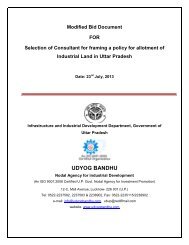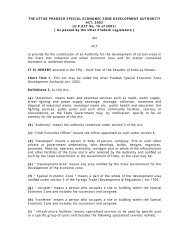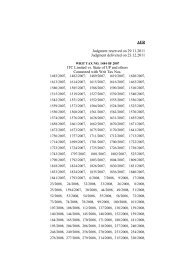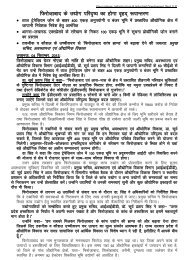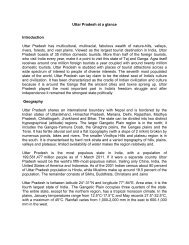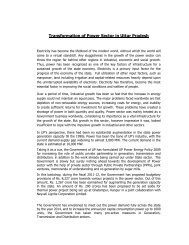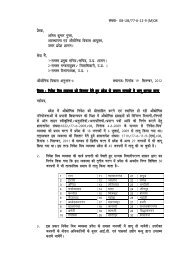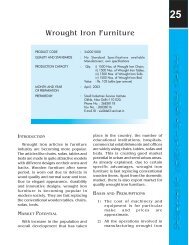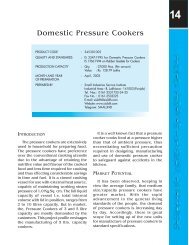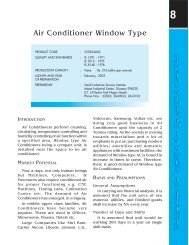the conditions of vehicles for valuation of the company. If the vehicles need replacement of alow cost item like hub caps, the impact on DCF will be less than if they need to replace gearboxes in a high proportion of vehicles. The person would also calculate DCF with reference tothe demand for taxis, the average mileage, cost of maintenance etc. Valuation of plant andmachinery is not a simple addition to DCF, but a factor to be taken into account whilecalculating DCF. In such calculation, plant and machinery may be a net negative factor in theDCF if replacement costs are high. Where surplus land would be sold this would be a positivefactor. If the sale of land can cover the cost of plant replacement the net effect would be neutralon DCF.For a going concern, various intangibles like brand equity, market share, competition, etc havea significant bearing on the valuation of the company. One cannot place a money value forthese factors. They have no financial value of their own that can be measured in money terms.Hence, there is no way of evaluating them in any other methodology. DCF is the onlymethodology, which takes into account these factors by incorporating them intrinsically inestimated cash flows. In calculating DCF, different assumptions will be made of market share,competition from imports etc, which are translated into financial terms. Sensitivity analysis canalso be made for different assumptions. The Financial Advisor and the Seller should exercisethe judgment on the most likely financial impact of the intangible assets the companypossesses, on cash flows and also on the discount rate to be applied while arriving at theoptimum DCF value, as strong intangible assets would help reduce the overall risk perceptionof the company.In a strategic sale, the bidders take into account not only DCF valuation, but also a premiumfor management control. Premium for management control would be a subjective item for eachbidder and will be reflected in the competitive bids. Therefore, the seller, while calculating theReserve Price, should not incorporate this premium in the valuation amount separately. Sincethere is no scientific method to quantify the control premium, it may be arbitrary to add controlpremium while arriving at the Reserve Price. In the book, “Corporate Valuation: Tools forEffective Appraisal and Decision Making” by Bradford Cornell, it is stated “Without knowingwhy premiums are paid it is impossible to determine whether it is reasonable to apply apremium (or the associated discount) to the appraiser target. In this respect both research andcommon sense support the proposition that a buyer is willing to pay more than the market pricefor a controlling interest in a company only when the buyer believes that the future cash flowof the company, and thereby the value of the company, can be increased once it is under his/hercontrol.” Further, it states, “…if the appraiser cannot identify what a buyer of the appraisertarget would change to increase cash flow, then there is no reason to assume that a controlpremium exists.”In the broad conclusions, of the Proceedings of the Seminar on Disinvestment in PublicSector held by Comptroller and Auditor General of India in New Delhi on 11 th /12 thOctober, 2001, it was clearly indicted that “Reserve Price should not include ControlPremium.” The following conclusions were made:There were considerable discussions on issues relating to valuation and the fixation ofreserve price. Valuation was an essential exercise for the Vendor and the Purchaser but afirm or fixed price was impossible to get. Two independent valuations often gave widelydifferent values. Valuation was more an art than a science. Regarding Reserve Price, it wasgenerally felt that a Reserve Price should be fixed, as it is essential that any sellerestablished a benchmark value for the company to be sold. In any case it should be morethan the liquidation value.It was widely accepted that the most effective method of obtaining the best price possiblewould be to have bids from a large fleet of competitors rather than pegging reserve price atartificially inflated levels.144
It was also recognized that valuation would be quite subjective and that it was possible thatdifferent valuations could yield widely varying figures.2.2 Balance Sheet methodThe Balance sheet or the Net Asset Value (NAV) methodology values a business on the basisof the value of its underlying assets. This is relevant where the value of the business is fairlyrepresented by its underlying assets. The NAV method is normally used to determine theminimum price a seller would be willing to accept and, thus serves to establish the floor for thevalue of the business. This method is pertinent where:The value of intangibles is not significant;The business has been recently set up.This method takes into account the net value of the assets of a business or the capital employedas represented in the financial statements. Hence, this method takes into account the amountthat is historically spent and earned from the business. This method does not, however,consider the earnings potential of the assets and is, therefore, seldom used for valuing a goingconcern. The above method is not considered appropriate, particularly in the following cases:When the financial statement sheets do not reflect the true value of assets, being either toohigh on account of possible losses not reflected in the balance sheet or too low because ofinitial losses which may not continue in future;Where intangibles such as brand, goodwill, marketing infrastructure, and productdevelopment capabilities, etc., form a major part of the value of the company;Where due to the changes in industry, market or business environment, the assets of thecompany have become redundant and their ability to create net positive cash flows infuture is limited.2.3 Market Multiple methodThis method takes into account the traded or transaction value of comparable companies in theindustry and benchmarks it against certain parameters, like earnings, sales, etc. Two of suchcommonly used parameters are:Earnings before Interest, Taxes, Depreciation & Amortisations (EBITDA).SalesAlthough the Market Multiples method captures most value elements of a business, it is basedon the past/current transaction or traded values and does not reflect the possible changes infuture of the trend of cash flows being generated by a business, neither takes into account thetime value of money adequately. At the same time it is a reflection of the current view of themarket and hence is considered as a useful rule of thumb, providing reasonableness checks tovaluations arrived at from other approaches. Accordingly, one may have to review a series ofcomparable transactions to determine a range of appropriate capitalisation factors to value acompany as per this methodology.145




